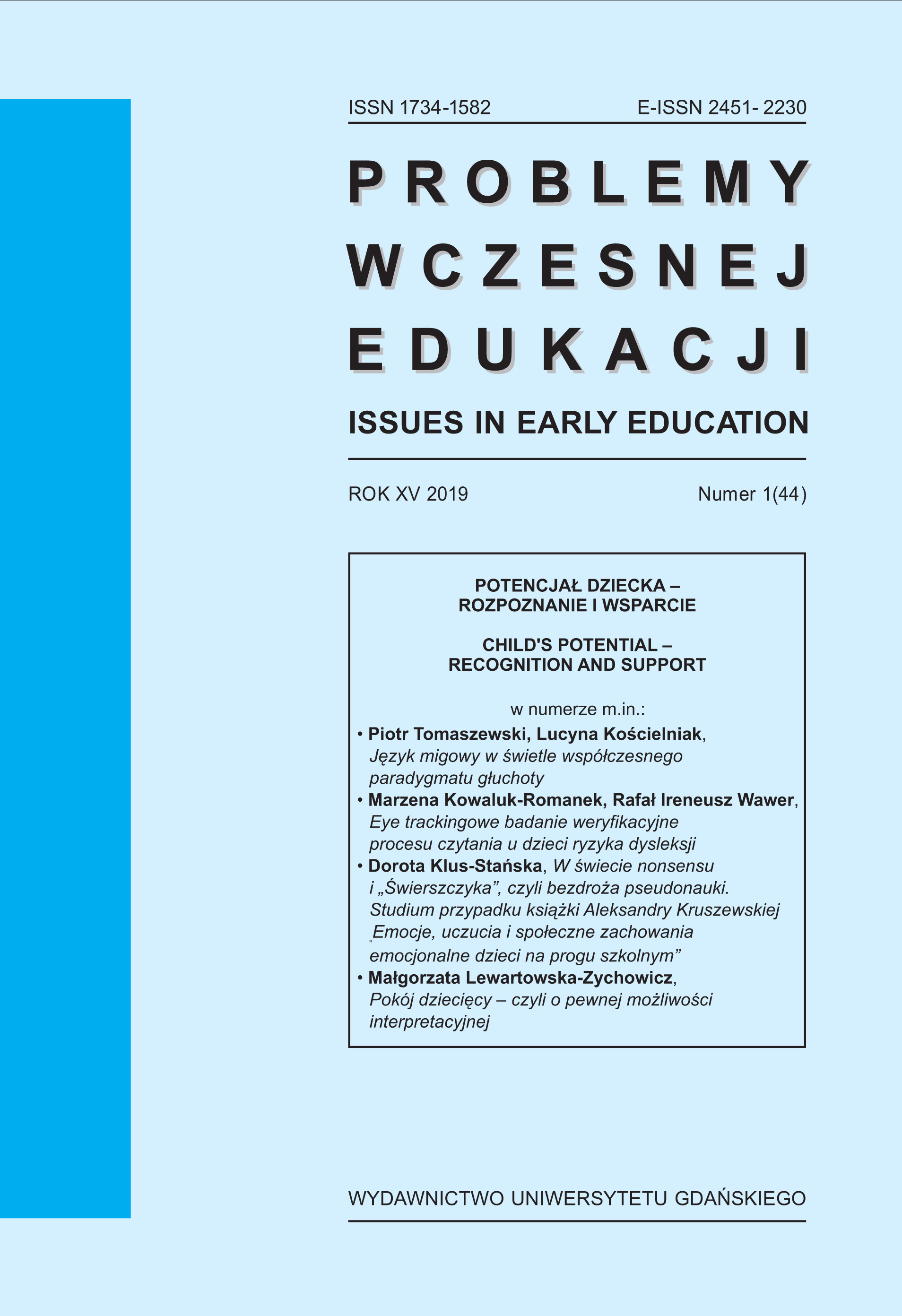Język migowy w świetle współczesnego paradygmatu głuchoty
DOI:
https://doi.org/10.26881/pwe.2019.44.01Słowa kluczowe:
głuche dzieci, język migowy, język mówiony, deprywacja językowa, implanty ślimakoweAbstrakt
The main issue addressed in this paper is a practical application of sign language in early development support for deaf and hard of hearing children in Poland. This discussion is set in a broad cultural, linguistic, psychological and rehabilitation context. This paper presents the concept of Mary Pat Moeller which includes four approaches to the use of sign language in the programming of language in DHH. The discussion on the possibility of Polish rehabilitation centres adopting these solutions required an explanation of the diff erences between auditory deprivation and language deprivation, which is another important issue addressed in this paper. The main aim of this publication is to propose a fl exible approach to the creation of a model of education for deaf and hard of hearing children, one that will completely fulfi ll the needs of a specifi c child and to substantially argue about the conviction that sign language is a factor potentially detrimental to the development of these children.

 Uniwersyteckie Czasopisma Naukowe
Uniwersyteckie Czasopisma Naukowe





